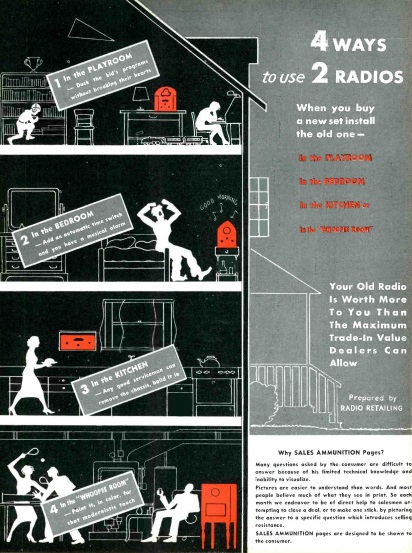Eighty years ago, consumers buying a new radio had come to expect that they could trade in the old set. This presented a headache for the retailer, since any sale of the used set would probably cut into sales of new sets. The trade press often contained pointers on what to do with these old sets, such as donating them to charitable organizations, or selling them in bulk to other dealers, hopefully in another town, so that they would be another market’s problem.
The October 1936 issue of Radio Retailing included this graphic to help salesman convince buyers that they would be better off having two sets.
The page was designed to be shared with customers, and noted that “many questions asked by the consumer are difficult to answer because of his limited technical knowledge and inability to visualize.” Thus, the graphic was easier to understand, “and most people believe much of what they see in print.” Thus, graphics such as this one were printed to assist the salesman close a deal by “picturing the answer to a specific question which introduces selling resistance.”
This page notes that the old radio is worth more than the maximum trade-in value any dealer could allow, and suggests four uses for the old set. First, it could be moved to the playroom, allowing the parents to “duck the kid’s programs without breaking their hearts.”
Another viable option would be the bedroom. The magazine notes that it could be connected to an automatic time switch for a musical alarm.
In the kitchen, “any good serviceman can remove the chassis and build it in” for a truly modern kitchen.
The final use would be in the “whoopee room,” where we see a group playing ping pong and enjoying cool beverages, listening to the old set which has been “painted, in color, for that modernistic touch.”

